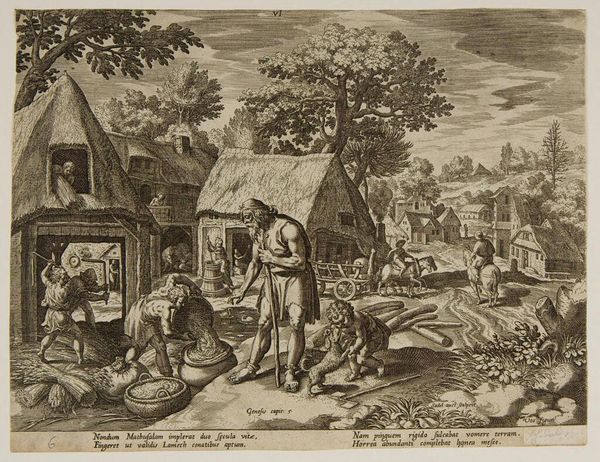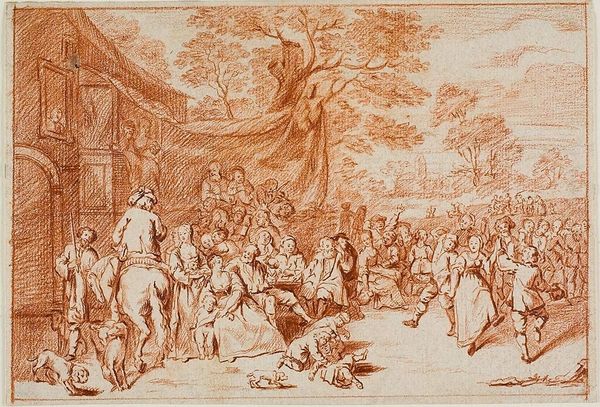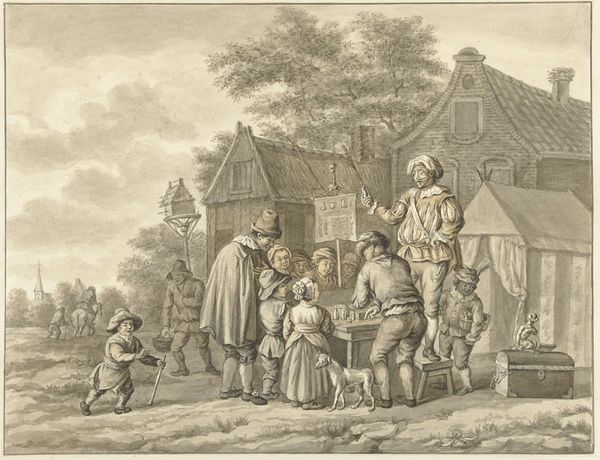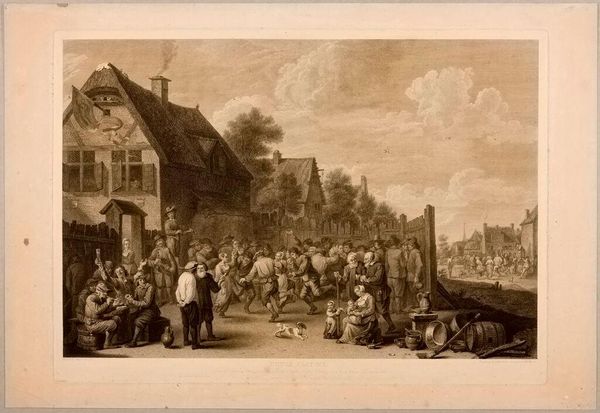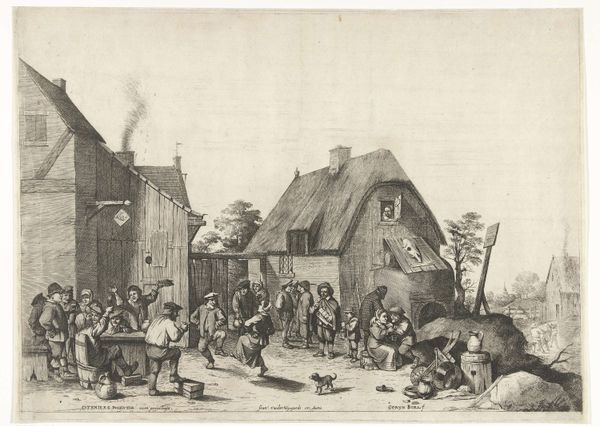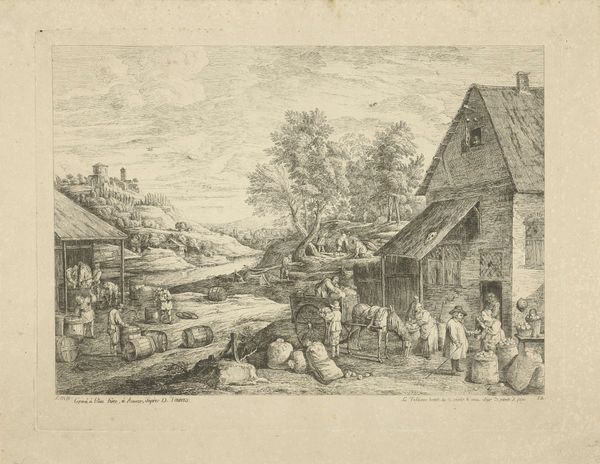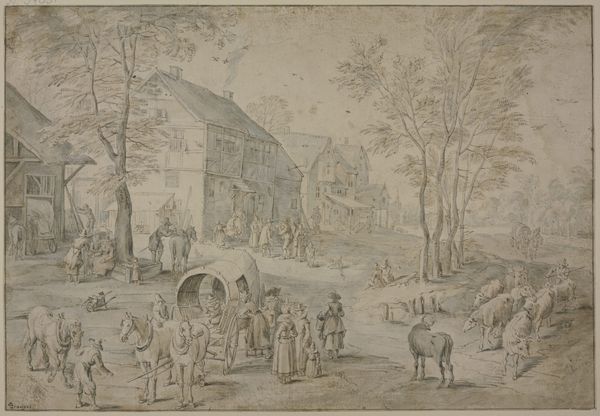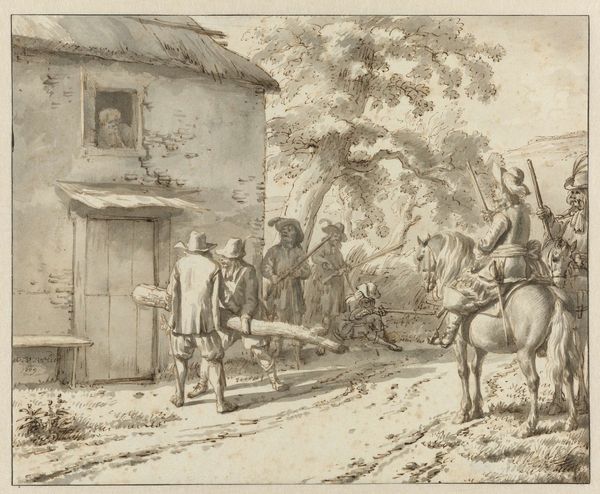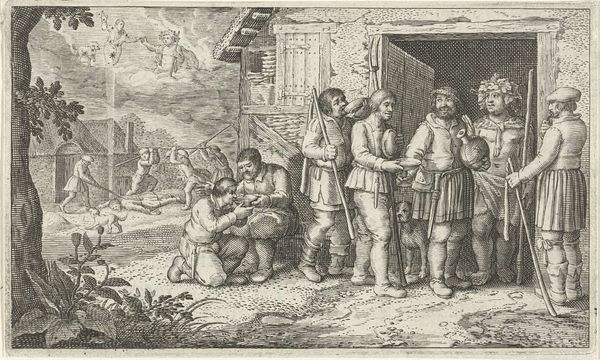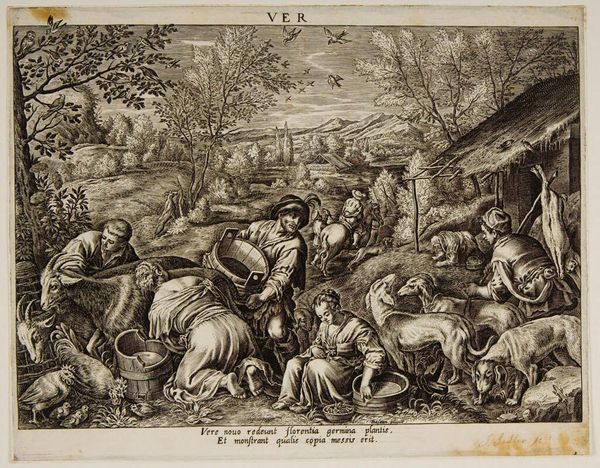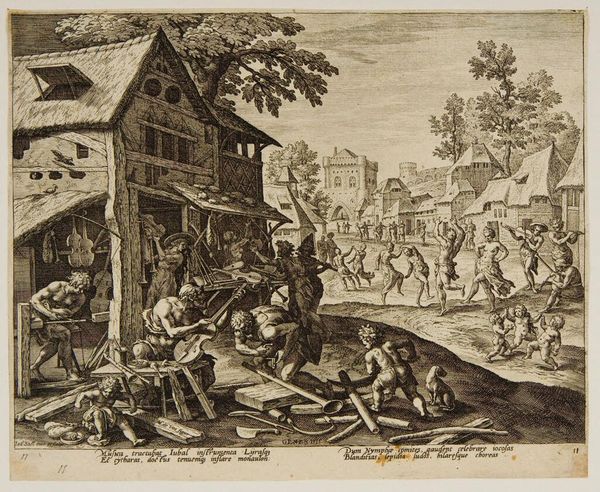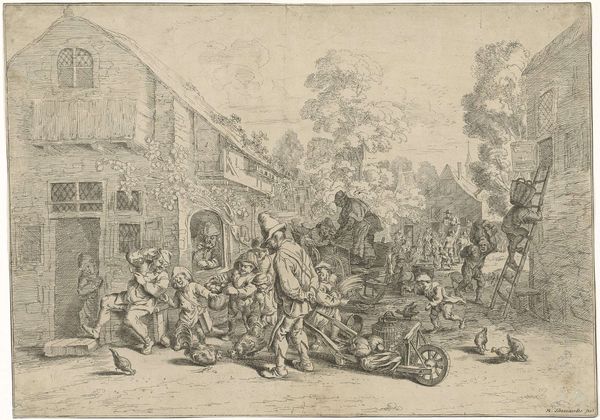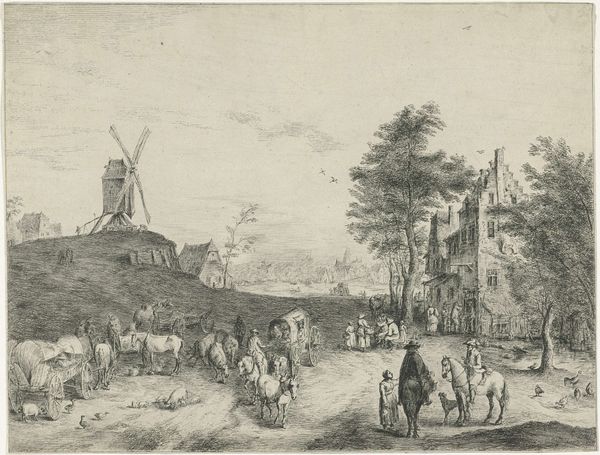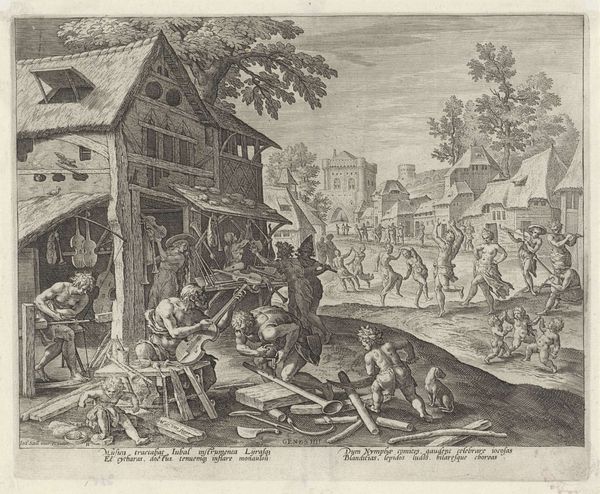
oil-paint
#
baroque
#
oil-paint
#
landscape
#
figuration
#
oil painting
#
genre-painting
Copyright: Public Domain: Artvee
Editor: This is "Merry-making in the Countryside," an oil painting attributed to David Teniers the Younger. The gathering of figures gives it a chaotic yet joyful feeling, and the brown, earthy tones highlight the rural setting. What strikes you most about this piece? Curator: I'm interested in how Teniers represents labor here. This isn't just a scene of carefree peasant life. Look at the wear on the building under repair, the tools left carelessly aside. It subtly speaks to the social context and class structures where "merry-making" exists alongside, and perhaps in response to, hard physical work. How does the depiction of materials – the rough wood, the barrels, the simple clothing – reinforce that understanding for you? Editor: I see your point! It's easy to overlook the implications of those materials, assuming the scene is simply a snapshot of leisure. Curator: Exactly. And think about the paint itself. Oil paint allows for rendering textures with incredible fidelity, almost fetishizing these everyday objects. What do you make of the fact that an expensive medium, requiring specialized knowledge to wield, is being used to depict, perhaps even celebrate, the "ordinary" lives of the working class? Editor: That contrast really makes you think about the audience for these paintings, and how they viewed these scenes. It feels less like a simple representation, and more like a carefully constructed commentary, considering how labour and materiality play into this. Curator: Precisely. This perspective shifts the focus from a romanticized genre scene to an examination of the labor and materials involved, both in the creation of the artwork itself and the scene it depicts. Editor: I've certainly gained a deeper appreciation for the complex social narrative embedded within seemingly simple paintings! Curator: And hopefully a sharper eye for the materials and processes that inform all art.
Comments
No comments
Be the first to comment and join the conversation on the ultimate creative platform.
